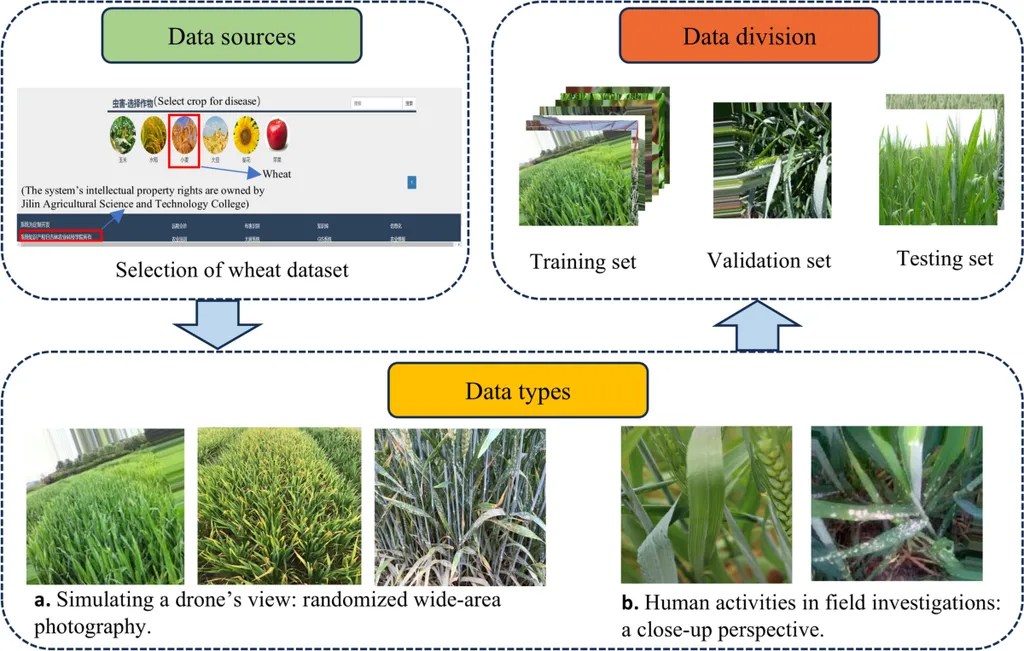In the ever-evolving landscape of precision agriculture, a novel framework is making waves, promising to revolutionize wheat disease detection. Researchers have introduced a lightweight dual-stream learning (LDSL) framework that could significantly enhance the efficiency and accuracy of identifying wheat diseases, a critical factor in maintaining production efficiency and grain quality.
The LDSL framework, developed by Lei Feng from the College of Electrical and Information Engineering at Jilin Agricultural Science and Technology University and published in *Plant Methods*, addresses the challenges posed by complex backgrounds and diverse lesion shapes in wheat disease images. “Our framework combines global semantic understanding with local discriminative analysis, making it highly effective in real-world, field conditions,” Feng explains.
The dual-stream architecture of the LDSL framework is its standout feature. The global learning stream extracts comprehensive semantic features and generates saliency maps to highlight key regions, while the local learning stream performs fine-grained inspection of these regions using a novel dynamic-static dual attention (DSDA) mechanism. This combination allows the framework to achieve remarkable accuracy, precision, recall, and F1-score metrics, outperforming several mainstream classification models.
One of the most significant advantages of the LDSL framework is its lightweight nature. With only 4.41 million parameters and 1.71G FLOPs, it requires minimal computational resources. This makes it ideal for deployment on edge devices, a crucial factor for real-world agricultural applications. “We wanted to ensure that our framework could be easily integrated into existing systems without requiring substantial computational power,” Feng adds.
The commercial impacts of this research are substantial. Accurate and efficient disease detection can lead to timely interventions, reducing crop losses and improving overall yield. For the agriculture sector, this means increased productivity and profitability. The framework’s ability to operate on edge devices also means that farmers and agricultural workers can use it in the field, making it a practical tool for precision agriculture.
The LDSL framework’s success in wheat disease detection opens up new possibilities for future developments in the field. As Feng notes, “Our framework can be adapted for other crops and diseases, making it a versatile tool for precision agriculture.” This adaptability could lead to widespread adoption across the agricultural sector, further enhancing disease detection and management.
In conclusion, the LDSL framework represents a significant advancement in wheat disease detection. Its combination of accuracy, efficiency, and adaptability makes it a valuable tool for the agriculture sector. As researchers continue to explore its potential, the framework could play a pivotal role in shaping the future of precision agriculture.

